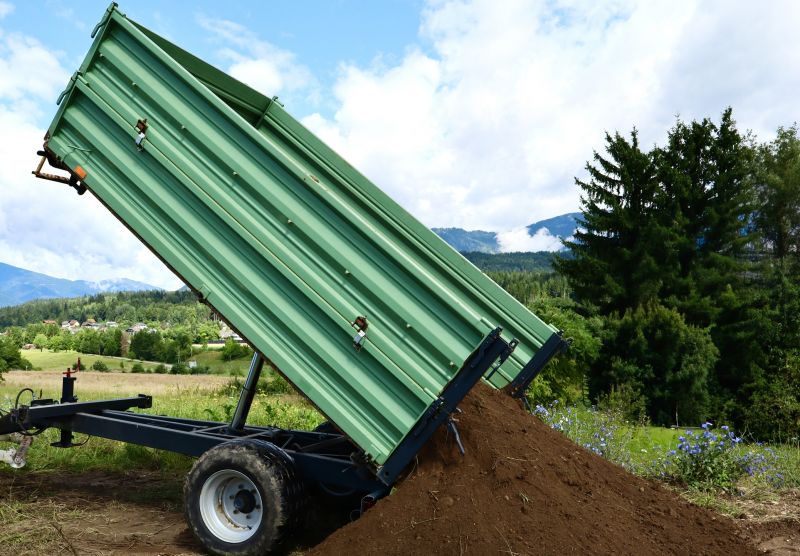Top-Rated Supplies For Efficient Dirt Installation Projects
Get insights into the best products that help you complete dirt installations quickly and with quality results.
 Dirt installations often require specific products to ensure stability, durability, and proper functionality. Whether you're creating a foundation for a garden path, installing a new lawn area, or preparing a base for outdoor structures, selecting the right products is crucial. These products help in leveling uneven ground, preventing erosion, and providing a solid base that can support various loads. From simple landscape fabrics to advanced geotextiles, there are numerous options tailored to different project needs. Proper preparation and the right materials can significantly improve the longevity and performance of your dirt installation.
Dirt installations often require specific products to ensure stability, durability, and proper functionality. Whether you're creating a foundation for a garden path, installing a new lawn area, or preparing a base for outdoor structures, selecting the right products is crucial. These products help in leveling uneven ground, preventing erosion, and providing a solid base that can support various loads. From simple landscape fabrics to advanced geotextiles, there are numerous options tailored to different project needs. Proper preparation and the right materials can significantly improve the longevity and performance of your dirt installation.
Top Overall Option
Heavy-Duty Geotextile Fabric
A versatile geotextile fabric designed for soil stabilization and erosion control, offering durability and permeability. It helps in creating a stable base for various dirt projects, providing long-lasting support and preventing soil movement. Suitable for both small and large-scale installations, this product is a reliable choice for many outdoor soil stabilization needs.
Types of Products For Dirt Installations
Landscape Fabric
Used to suppress weeds and stabilize soil beneath pathways or gardens, providing a breathable barrier that prevents weed growth while allowing water to pass through.
Geogrids
Reinforcement materials that distribute loads and improve soil stability, ideal for driveways and retaining walls.
Drainage Mats
Permeable layers that facilitate water flow and prevent pooling, useful in areas with poor drainage or water runoff issues.
Erosion Control Blankets
Protect soil from erosion caused by wind or water, often used on slopes or disturbed land.
Soil Stabilizers
Chemical or natural agents that bind soil particles together, enhancing strength and reducing erosion.
Geotextile Sheets
Heavy-duty fabrics used for separation and reinforcement in soil layers, suitable for large projects.
Sandbags
Flexible barriers for controlling water flow or stabilizing soil in specific areas.
Compaction Equipment
Tools like plate compactors or rammers used to compress soil and increase stability.
Crushed Stone
Provides a stable base for pathways or foundations, facilitating drainage and support.
Mulch and Ground Cover
Materials used to protect soil surface, retain moisture, and reduce erosion.
Retaining Wall Blocks
Structural units for building retaining walls that hold back soil and create level surfaces.
Permeable Pavers
Paving options that allow water to pass through, reducing runoff and promoting drainage.
Drainage Pipes
Underground pipes that channel water away from soil or structures, preventing water accumulation.
Soil Amendments
Organic or inorganic additives that improve soil quality and stability.
Popular Choices
Widely used for weed suppression and soil stabilization in various outdoor projects.
Commonly selected for reinforcing soil in driveways and pathways.
Popular for improving water flow and reducing pooling in garden beds.
Frequently used on slopes and disturbed land to prevent erosion.
Often chosen for temporary stabilization or water diversion.
Commonly used as a base material for pathways and foundations.
Popular for creating functional, water-permeable surfaces.
Chosen for enhancing soil strength in construction and landscaping.
Frequently selected for building durable retaining structures.
Convenient for covering large areas to prevent weed growth.
Essential for directing water away from soil and structures.
Popular for soil protection and moisture retention.
When planning a dirt installation, it's important to consider the type of soil, the expected use, and environmental factors. For instance, areas prone to water runoff may benefit from drainage mats or permeable layers that facilitate water flow. Additionally, incorporating stabilizers or binding agents can help maintain soil integrity over time. The choice of products also depends on the scale of the project; small garden beds may only need basic landscape fabric, while large-scale installations might require more specialized geogrids or reinforcement materials.
Investing in quality products designed specifically for dirt work can simplify the installation process and lead to more reliable results. Properly selected materials can reduce future maintenance needs and help prevent issues such as shifting, settling, or erosion. When shopping for these products, it’s beneficial to understand the different types available, their intended applications, and compatibility with your project’s specific requirements. With the right combination of products, you can achieve a stable, functional, and long-lasting dirt installation.
Key Buying Considerations
- Assess the soil type and drainage needs of your project to select appropriate products.
- Consider the scale and scope of the installation to determine the durability and quantity of materials needed.
- Identify whether the project requires reinforcement, erosion control, or simple stabilization to choose suitable products.
- Check product permeability to ensure proper water flow and prevent pooling or runoff issues.
- Evaluate the environmental conditions, such as slope or water exposure, to select resistant materials.
- Determine compatibility with existing structures or landscaping elements for seamless integration.
- Review installation requirements and whether additional tools or equipment are necessary.
- Prioritize products with proven performance in similar applications for reliability.
- Consider ease of handling and transportation, especially for large or heavy materials.
- Budget appropriately, balancing cost with quality and longevity of the materials.
- Look for products with clear installation instructions and support resources.
- Ensure that the selected products meet any local building codes or regulations.
- Think about future maintenance needs and choose materials that simplify upkeep.
- Review customer feedback and expert recommendations to inform your choices.
- Plan for potential expansion or modifications to your project in the future.
